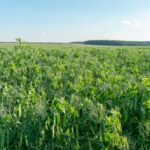Proper grain drying is an essential step in post-harvest management, especially in South Africa, where fluctuating weather conditions can lead to significant grain losses. By reducing moisture content, grain dryers help prevent mold, insect infestations, and spoilage, ensuring better quality and longer storage life. This guide explains how to set up and use a grain dryer to optimize your post-harvest process.
What is a Grain Dryer?
A grain dryer is a device or machine used to reduce the moisture content of grains such as maize, wheat, sorghum, and soybeans. This ensures the grain remains safe for storage, transport, and sale. Grain dryers come in various types, including batch dryers, continuous-flow dryers, and solar-powered dryers.
Steps to Set Up a Grain Dryer
1. Choose the Right Dryer for Your Needs
Selecting the appropriate dryer depends on your farm size, type of grain, and budget.
- Batch Dryers: Ideal for small to medium-scale operations, drying grains in set quantities.
- Continuous-Flow Dryers: Suitable for large-scale farming, offering continuous drying for high volumes.
- Solar-Powered Dryers: Cost-effective and eco-friendly, suitable for small-scale farms with abundant sunlight.
2. Identify a Suitable Location
Choose a location that is:
- Well-ventilated to dissipate heat and moisture.
- Near storage facilities to reduce handling and transport time.
- Accessible for equipment maintenance and fuel supply.
3. Prepare the Grain for Drying
Before loading the dryer, clean the grain to remove debris, stones, and damaged kernels. This ensures efficient drying and prevents clogging.
4. Install the Dryer
Follow the manufacturer’s instructions for installation. Key steps include:
- Setting the dryer on a stable, level surface to prevent tipping or uneven drying.
- Connecting the power source, whether electricity, gas, or solar.
- Installing ventilation or exhaust systems to safely release hot air.
5. Calibrate the Dryer Settings
Adjust the temperature and airflow settings based on the grain type:
- Maize: Dry to 12–14% moisture content.
- Wheat: Target a 13–15% moisture level.
- Soybeans: Maintain moisture content at 11–13%.
Use a moisture meter to monitor levels and prevent overdrying, which can reduce grain quality.
How to Operate the Grain Dryer
1. Load the Grain
- Ensure even loading to allow uniform airflow.
- Avoid overloading, as this can lead to incomplete drying and strain the machine.
2. Monitor Drying Conditions
- Check temperature, airflow, and humidity levels regularly.
- Inspect grains periodically to ensure they are drying evenly.
3. Use Recommended Drying Times
Drying times vary depending on grain type, moisture content, and dryer model. Consult your user manual or agricultural expert for guidance.
4. Unload the Grain
Once the desired moisture content is achieved:
- Allow the grain to cool before unloading to avoid condensation in storage.
- Transfer dried grain to a clean, dry storage facility.
Maintenance Tips for Grain Dryers
Regular maintenance extends the life of your grain dryer and ensures optimal performance.
- Clean the Dryer: Remove dust, chaff, and grain residues after each use.
- Inspect Components: Check fans, burners, and belts for wear and tear.
- Lubricate Moving Parts: Apply oil or grease to reduce friction and prevent breakdowns.
- Replace Worn Parts: Address damaged components promptly to avoid costly repairs.
- Service Annually: Schedule professional servicing before the drying season begins.
Benefits of Using a Grain Dryer
- Improved Grain Quality: Reduces moisture content to safe levels, preventing mold and pests.
- Extended Storage Life: Properly dried grains can be stored for months without quality loss.
- Reduced Post-Harvest Losses: Protects grains from spoilage due to unexpected rain or high humidity.
- Increased Market Value: Dried grains are easier to process, transport, and sell.
- Efficiency: Saves time compared to traditional sun-drying methods.
Common Mistakes to Avoid
- Overdrying the Grain: Can lead to weight loss and reduced profitability.
- Uneven Loading: Results in inconsistent drying and wasted energy.
- Neglecting Maintenance: Increases the risk of breakdowns during critical times.
- Ignoring Safety Measures: Ensure proper ventilation and avoid overheating to prevent fires.
Grain dryers are invaluable tools for South African farmers seeking to improve post-harvest management. By setting up and operating your dryer correctly, you can reduce losses, maintain grain quality, and achieve better financial returns. Whether you’re a small-scale farmer or managing large operations, investing in a modern grain dryer is a step toward more sustainable and profitable farming practices.
Join 'Farmers Mag' WhatsApp Channel
Get the latest Farming news and tips delivered straight to your WhatsApp
CLICK HERE TO JOIN






